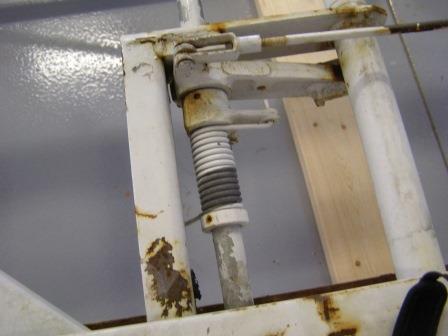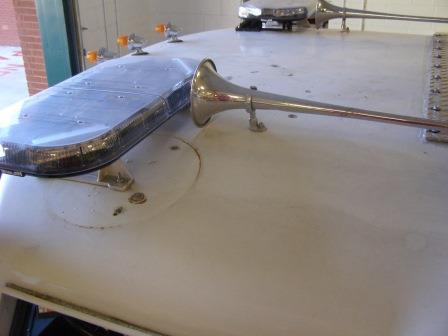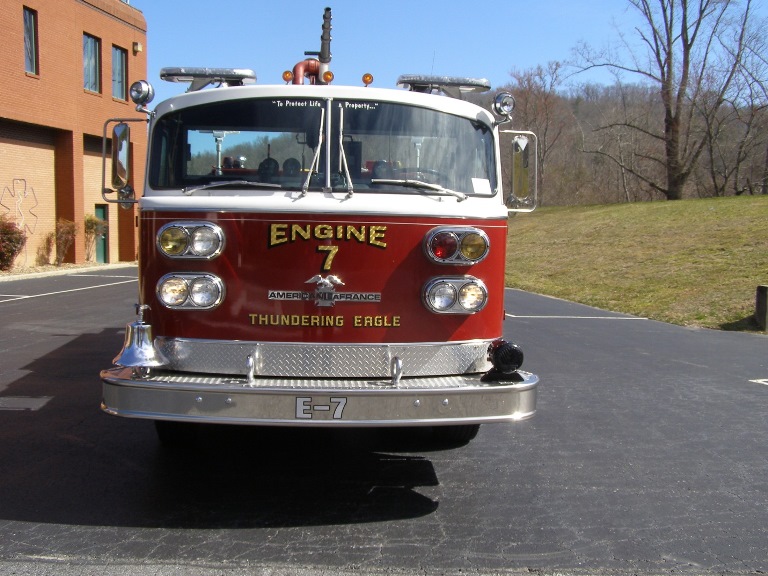A small volunteer fire department located somewhere in the Carolina mountains was quite frustrated with an issue they were having with a ladder truck assembly. From the information they provided, their unit was involved in an extremely serious fire suppression call that lasted for more than a 24-hour deployment period, and, once the fire was put out, when they attempted to lower and retrieve the ladder mid-section, it was getting bound and stuck in the open position. Once the ladder was brought back to the headquarters company, closer examination of the rungs revealed many welds had cracked, three sections had twisted, and the slide mechanisms were completely inoperable.
Various experts including metallurgists, corrosion engineers, fatigue analysts, and welding examiners were able to somewhat agree that the cause of the structural failure was improper weld repair in various areas. However, they also pointed out that the faulty weld repair areas were repainted, and there was basically an open overture; the fire department had performed uncertified welding and attempted to conceal the defects by over painting prior to the fire-related incident.
Fire Industry Insight
When a fire department owns certain pieces of equipment, for example this ladder truck, the insurance premiums of the home owners and businesses in their jurisdiction get reduced premium rates because of the proximity and preparedness of the personnel and equipment. So rightfully, the tax payers consider the expense a major — and worthwhile — investment for the entire community. Unfortunately, until the ladder truck could be placed back into critical service, the local premium rates increased, so it was vital the truck be reconditioned just as quickly as possible.
Everyone involved in the project soon realized the truck ladder assembly was a complete loss; however, there was still a story that needed to unfold, and as with many of the cases I work on, the blame game started and someone had to be held accountable.
Evaluating the Evidence
The truck was a previously owned 1981 model purchased by my client within the past 18 months from a municipality in the central United States. I hadn’t known that there was an active market for previously owned fire trucks, nor had I  realized how expensive the equipment can be to purchase, upgrade, and maintain. The truck came with impeccable records, which detailed daily, monthly, and annual types of inspections. It was clear the vehicle had been very well maintained for many years.
realized how expensive the equipment can be to purchase, upgrade, and maintain. The truck came with impeccable records, which detailed daily, monthly, and annual types of inspections. It was clear the vehicle had been very well maintained for many years.
I had to imagine how a complex structure such as the ladder assembly was positioned and dismantled during the original surface preparation and coating application process. Preliminary visual inspections yielded very few runs, drips, or sags in the applied film and my first impression was that it was completed by professional painters with the touch of a master craftsman. Upon closer review of the entire truck, I began to find evidence of some very unique failure mechanisms within the different coatings. Portions of the cab and box frame were white or red, yet the white paint on the cab and on the ladder assembly itself were different coating materials.
Closer examination revealed there was white over-sprayed paint on areas one would consider dismantled during the original painting process. These areas included anti-slip ladder rung covers, springs, cables, and stickers used to indicate extended elevation. Scraping away the white topcoat revealed an olive drab-colored primer followed by one to two layers of topcoat. Laboratory testing indicated the topcoat materials were identical, but we had a very difficult time  determining the length of time each had been applied.
determining the length of time each had been applied.
The fire truck is designed so one can visually ascertain the fly basket projection distance by elevation stickers applied to the stringers. At the 51-foot (16 m) elevation line a small plate was noted, and it was suspected it was an after-market addition not otherwise indicated in the vast amount of records we had been provided. When the plate was removed, there was an obvious dent in the stringer that was impossible to straighten out, and we determined that the plate had been circumferential welded over the dent to conceal it. The paint under the plate had both the green primer and one topcoat of white paint, yet around the weld seam there were two layers of the white topcoat. On the newly installed plate itself, there was no primer.
One puzzling aspect of this case was that the truck manufacturer had gone out of business, and we had limited access to records from them to compare and contrast what we were observing during the failure analysis. So the big question was not if but when was the truck initially damaged and how did someone acquire the same identical paint to spray-apply a cover coat?
Lessons Learned
After an exhaustive records review, we were able to discover that the truck had been damaged in 1986. The incident happened when the ladder was fully extended, swung erratically with a firefighter and a full weight load in the basket, and struck a building. The smoking gun was a newspaper article that actually had a picture of the ladder as it was hung up on the side of the building at the impact site. So, as we sifted through the pieces of the puzzle, we found a receipt for 3 gallons (11 L) of white paint purchased from the original manufacturer, and we learned the city garage personnel had repaired the ladder and repainted it (not to obscure the repairs but rather to keep the assembly one color without obvious touched up paint). The applied coating had performed well beyond expectations, but no paint is designed to strengthen welds and overcome mechanical damage.
In the end, the parties were able to work out their differences and settle the case amicably. When the truck was retired as a ladder and retrofitted to be a tanker we also noticed something very interesting when the sirens were removed and replaced: We found paint blistering in a perfectly round circle on top of the cab. These blisters formed when the sirens were installed over paint that had not fully dried and certainly was not cured. The entrapped solvent could not uniformly transmigrate through the paint film as a gasket fitted to the bottom side of the siren sealed off the possibility of evacuative air reaching and dehydrating the uncured film. And after more than 30 years, the evidence was still there, just as the day it was when the siren was factory installed.
About the Author
Craig Campbell is the managing partner of Paint Inspection Services, Inc., a highly specialized and diversified company serving both public and private clients throughout North America. He has more than 27 years of increasing experience and responsibility in the professional coatings industry in varying degrees. He is a NACE Level III Certified coating inspector. Beginning with the U.S. Army Corps of Engineers and continuing into private practice, his involvement includes functions in sales and marketing, field and shop production, operations management, quality control and assurance, shop and field surface preparation, and coating application inspections. His more recent areas of expertise include forensic coating failure analysis, expert witness, litigation support, executive management, and professional development. For more information, contact: Paint Inspection Services, Inc., (513) 237-7839, www.paintinspectionservices.com
